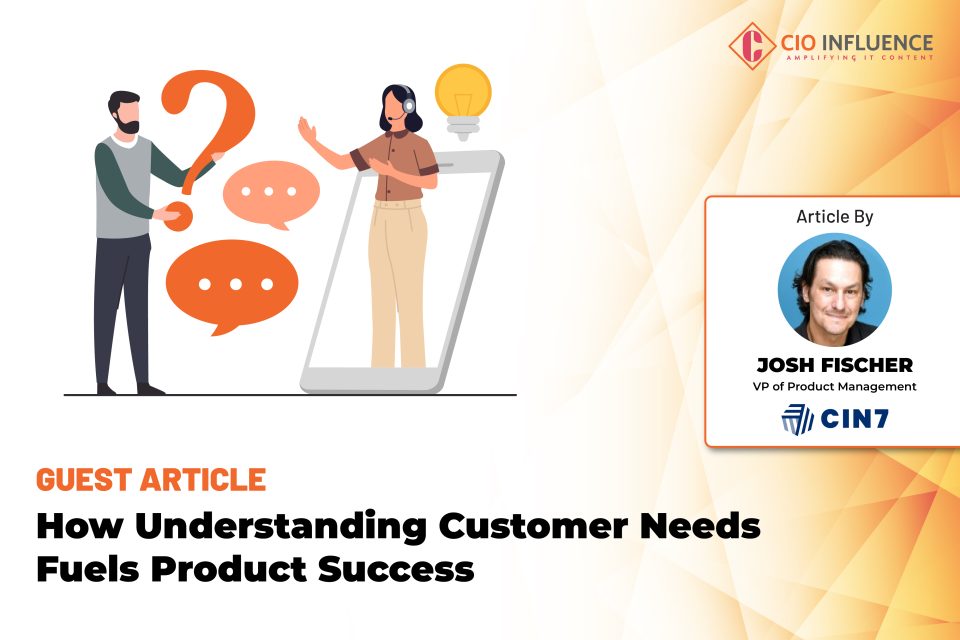Throughout my career, a common thread has been commerce. I’m fascinated by how businesses operate online and engage with buyers. Not only the final stages of the supply chain but also all the B2B transactions throughout it.
The convenience of online shopping is continually transforming the retail experience. But the ever evolving changes in consumer preferences force the supply chain industry to be flexible and adaptive. In an industry that has traditionally been resistant to change, it can be difficult to adapt. However, the potential benefits are significant.
A study from Accenture found 90% of companies expect generative AI to revolutionize their industry and how they interact with customers. For example, by leveraging AI to gain a deeper understanding of customer preferences and behaviors, businesses can not only meet but anticipate customer needs, enabling them to develop more targeted product strategies that drive long-term success.
Also Read: CIO Influence Interview with Kevin Bocek, Chief Innovation Officer at Venafi
Digital Natives Innovating Supply Chain Industry
Over the past 20 years, some of the most impactful changes in supply chain solutions have been driven by digital natives – those who have grown up with digital technology and are now in positions to innovate and lead. Digital natives have learned to be lean, flexible, and customer-focused. In the supply chain industry, they have created new expectations. Software must be easy-to-use, browser-based, fast, stable, and feature-rich.
And, while digital natives are driving industry-solutions, they are also our customers, which means it’s crucial to understand what they want. Innovation and understanding customer behavior is a two way street, meaning that by leveraging AI to meet their needs and predict their behavior, companies can tailor their products to meet evolving expectations and stay ahead in a continually changing industry.
Common Mistakes in Inventory and Supply Chain Product Implementation
So, how can manufacturers and retailers adapt to new expectations?
When planning new inventory and supply chain product implementation, it can be easy to fall victim to mistakes. These are two of the most common mistakes businesses make during inventory and supply chain product implementation.
- Unclear Understanding of Workflows: Businesses must understand their processes and workflows before implementing a new solution. Clearly defining these processes can lead to faster deployment and lower project costs. Equally important is onboarding your team early to review their processes and areas of improvement. Failing to do so can result in lost money, time, patience, morale, and even project failure, impacting customers and product availability.
- Resistance to Change: Many businesses choose to customize the software to match their unique workflows instead of adapting their processes. Convincing a team to change their process can be difficult, but it is less painful and expensive than implementing customizations.
Also Read: An Evolutionary Approach to Artificial Intelligence
Solving with AI
In today’s digital age, AI plays a critical role in streamlining operations, improving efficiency, and providing businesses better visibility into inventory and sales data. However, successfully integrating AI and other advanced technology into supply chain management requires a thoughtful approach to product design and implementation.
It’s important to understand two distinct approaches product managers can take with designing and implementing new products: “The Innovator Approach” involves knowing a market extremely well in order to anticipate market needs, and “The Supplier Approach” which focuses on listening and responding to market demands. The best product managers blend both approaches to guide their product in the right direction and maintain a clear vision.
While each has its pros and cons, both rely on one common principle: the market holds all the information needed to define an appropriate path forward. By leveraging the power of AI, businesses can collect market information and convert it into actionable insights. Through this data, the product manager can clearly see the end result, understand how the market will use the solution, the questions customers will ask, and what it takes to convert prospects.
Using these strategic product management approaches combined with the technological advancements of AI, businesses are better positioned to thrive in the evolving landscape. As customer preferences continually shift and demand for convenience in shopping grows, anticipating and responding to these needs is critical. The supply chain industry must embrace change and innovation to stay competitive.
[To share your insights with us as part of editorial or sponsored content, please write to psen@itechseries.com]


